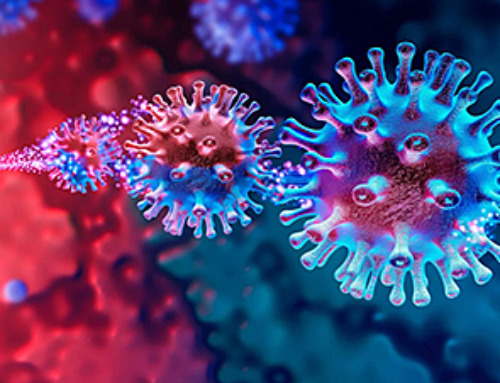Researchers from the Netherlands Institute for Neuroscience found that the superior colliculus, a brain region preserved throughout evolution, plays a more vital role in vision than previously believed.
When we look at something, we can easily distinguish an object from the background. While this sounds obvious, how our brain accomplishes it is still quite complicated. It has long been known that a brain area called the visual cortex is involved in the process. Yet there are animals in which this area is much less developed than ours or does not exist at all. So how do these animals see when a prey or predator approaches them in a crowded background? Could another player be involved after all?
Visual information travels from our retina to the visual cortex, but also partly to a structure called the superior colliculus. This is the ancient visual system common to all classes of vertebrates, from fish to amphibians, reptiles, birds, and mammals. Remarkably, this structure has been preserved throughout evolution, but varies greatly in relative size between different organisms. For example, the superior colliculus is relatively large in fish and birds whereas it is just a tiny pea tucked away in grey matter in humans.
Two parallel paths
To find out exactly what the superior colliculus does, Leonie Cazemier and her colleagues from Alexander Heimel's and Pieter Roelfsema's groups studied mice and their ability to distinguish objects from the background. The mouse is an interesting model because, like in humans, its brain has two parallel pathways: both the visual cortex and the superior colliculus. The mice were trained to distinguish figures from a background, which appeared on the left or right side of the image. By licking either left or right, the mice reported on which side the image had appeared.
Alexander Heimel: "Previous research already showed that a mouse can still complete the task if you turn off its visual cortex, which suggests that there is a parallel pathway for visual object detection. In this study, we switched off the superior colliculus using optogenetics to see what effect that would have. Contrary to the previous study, the mice became worse at detecting the object, indicating that the superior colliculus plays an important role during this process. Our measurements also showed that information about the visual task is present in the superior colliculus, and that this information is less present the moment a mouse makes a mistake. So, its performance in the task correlates with what we're measuring."
Function in humans
"How this works in humans is not entirely clear yet. Although humans also have two parallel systems, their visual cortex is much more developed. The superior colliculus may therefore play a less important role in humans. It is known that the moment someone starts waving, the superior colliculus directs your gaze there. It is also striking that those who are blind with a double lesion in the visual cortex do not see anything consciously but can often still navigate and avoid objects. Our research shows that the superior colliculus might be responsible for this and may therefore be doing more than we thought."
Reference: "Involvement of superior colliculus in complex figure detection of mice" by J Leonie Cazemier, Robin Haak, TK Loan Tran, Ann TY Hsu, Medina Husic, Brandon D Peri, Lisa Kirchberger, Matthew W Self, Pieter Roelfsema and J Alexander Heimel, 25 January 2024, eLife.
DOI: doi:10.7554/eLife.83708
News
COVID-19 still claims more than 100,000 US lives each year
Centers for Disease Control and Prevention researchers report national estimates of 43.6 million COVID-19-associated illnesses and 101,300 deaths in the US during October 2022 to September 2023, plus 33.0 million illnesses and 100,800 deaths [...]
Nanomedicine in 2026: Experts Predict the Year Ahead
Progress in nanomedicine is almost as fast as the science is small. Over the last year, we've seen an abundance of headlines covering medical R&D at the nanoscale: polymer-coated nanoparticles targeting ovarian cancer, Albumin recruiting nanoparticles for [...]
Lipid nanoparticles could unlock access for millions of autoimmune patients
Capstan Therapeutics scientists demonstrate that lipid nanoparticles can engineer CAR T cells within the body without laboratory cell manufacturing and ex vivo expansion. The method using targeted lipid nanoparticles (tLNPs) is designed to deliver [...]
The Brain’s Strange Way of Computing Could Explain Consciousness
Consciousness may emerge not from code, but from the way living brains physically compute. Discussions about consciousness often stall between two deeply rooted viewpoints. One is computational functionalism, which holds that cognition can be [...]
First breathing ‘lung-on-chip’ developed using genetically identical cells
Researchers at the Francis Crick Institute and AlveoliX have developed the first human lung-on-chip model using stem cells taken from only one person. These chips simulate breathing motions and lung disease in an individual, [...]
Cell Membranes May Act Like Tiny Power Generators
Living cells may generate electricity through the natural motion of their membranes. These fast electrical signals could play a role in how cells communicate and sense their surroundings. Scientists have proposed a new theoretical [...]
This Viral RNA Structure Could Lead to a Universal Antiviral Drug
Researchers identify a shared RNA-protein interaction that could lead to broad-spectrum antiviral treatments for enteroviruses. A new study from the University of Maryland, Baltimore County (UMBC), published in Nature Communications, explains how enteroviruses begin reproducing [...]
New study suggests a way to rejuvenate the immune system
Stimulating the liver to produce some of the signals of the thymus can reverse age-related declines in T-cell populations and enhance response to vaccination. As people age, their immune system function declines. T cell [...]
Nerve Damage Can Disrupt Immunity Across the Entire Body
A single nerve injury can quietly reshape the immune system across the entire body. Preclinical research from McGill University suggests that nerve injuries may lead to long-lasting changes in the immune system, and these [...]
Fake Science Is Growing Faster Than Legitimate Research, New Study Warns
New research reveals organized networks linking paper mills, intermediaries, and compromised academic journals Organized scientific fraud is becoming increasingly common, ranging from fabricated research to the buying and selling of authorship and citations, according [...]
Scientists Unlock a New Way to Hear the Brain’s Hidden Language
Scientists can finally hear the brain’s quietest messages—unlocking the hidden code behind how neurons think, decide, and remember. Scientists have created a new protein that can capture the incoming chemical signals received by brain [...]
Does being infected or vaccinated first influence COVID-19 immunity?
A new study analyzing the immune response to COVID-19 in a Catalan cohort of health workers sheds light on an important question: does it matter whether a person was first infected or first vaccinated? [...]
We May Never Know if AI Is Conscious, Says Cambridge Philosopher
As claims about conscious AI grow louder, a Cambridge philosopher argues that we lack the evidence to know whether machines can truly be conscious, let alone morally significant. A philosopher at the University of [...]
AI Helped Scientists Stop a Virus With One Tiny Change
Using AI, researchers identified one tiny molecular interaction that viruses need to infect cells. Disrupting it stopped the virus before infection could begin. Washington State University scientists have uncovered a method to interfere with a key [...]
Deadly Hospital Fungus May Finally Have a Weakness
A deadly, drug-resistant hospital fungus may finally have a weakness—and scientists think they’ve found it. Researchers have identified a genetic process that could open the door to new treatments for a dangerous fungal infection [...]
Fever-Proof Bird Flu Variant Could Fuel the Next Pandemic
Bird flu viruses present a significant risk to humans because they can continue replicating at temperatures higher than a typical fever. Fever is one of the body’s main tools for slowing or stopping viral [...]





















